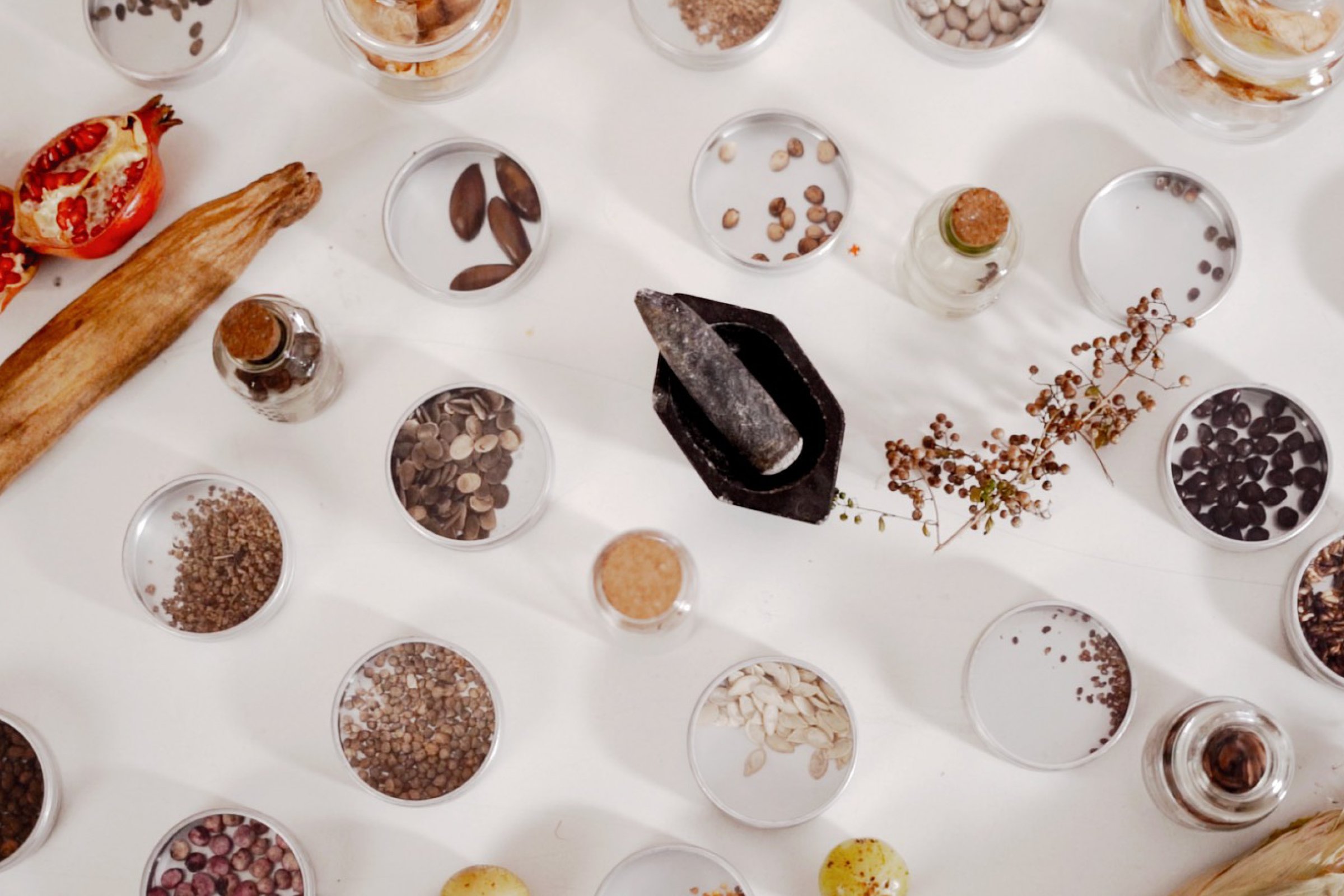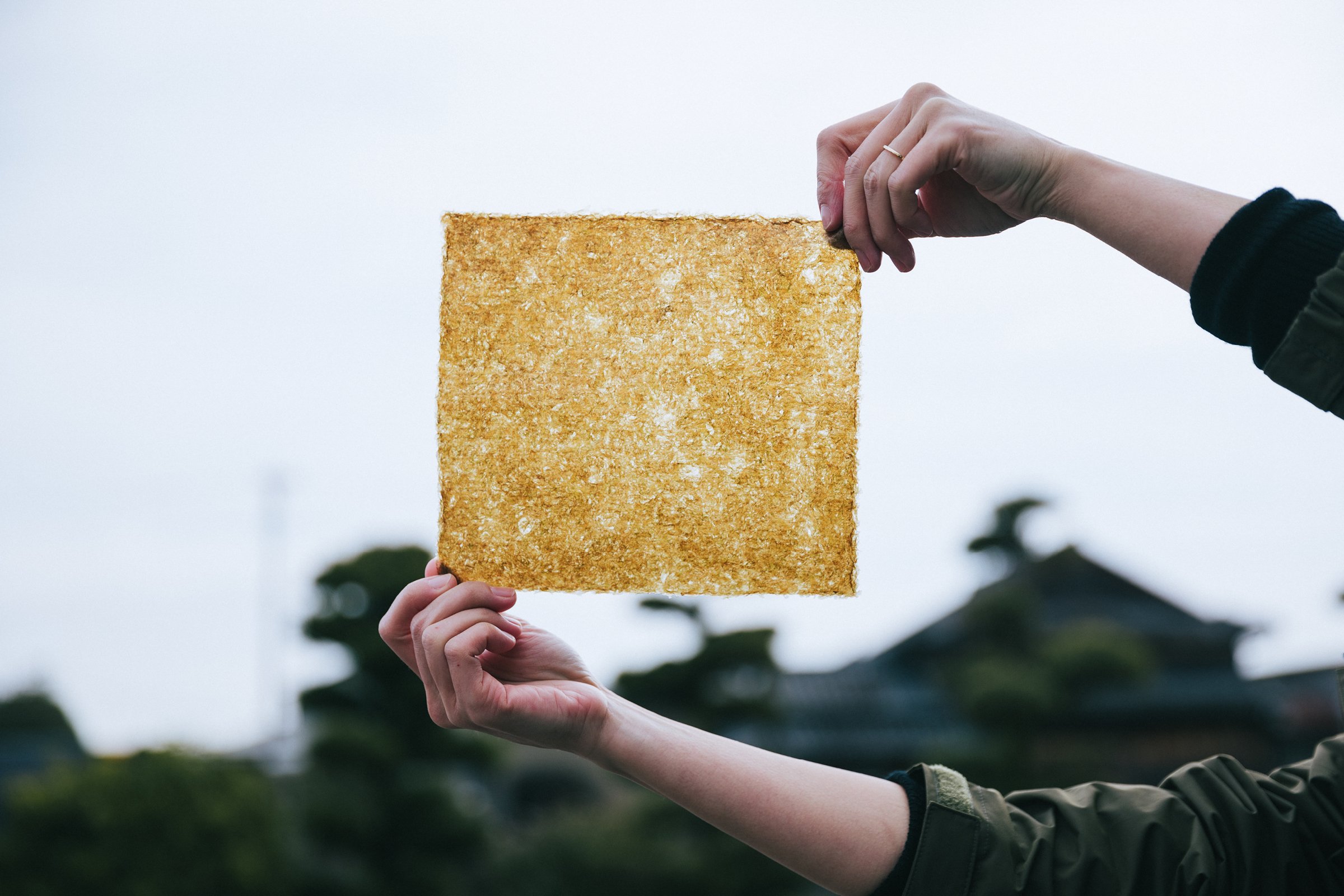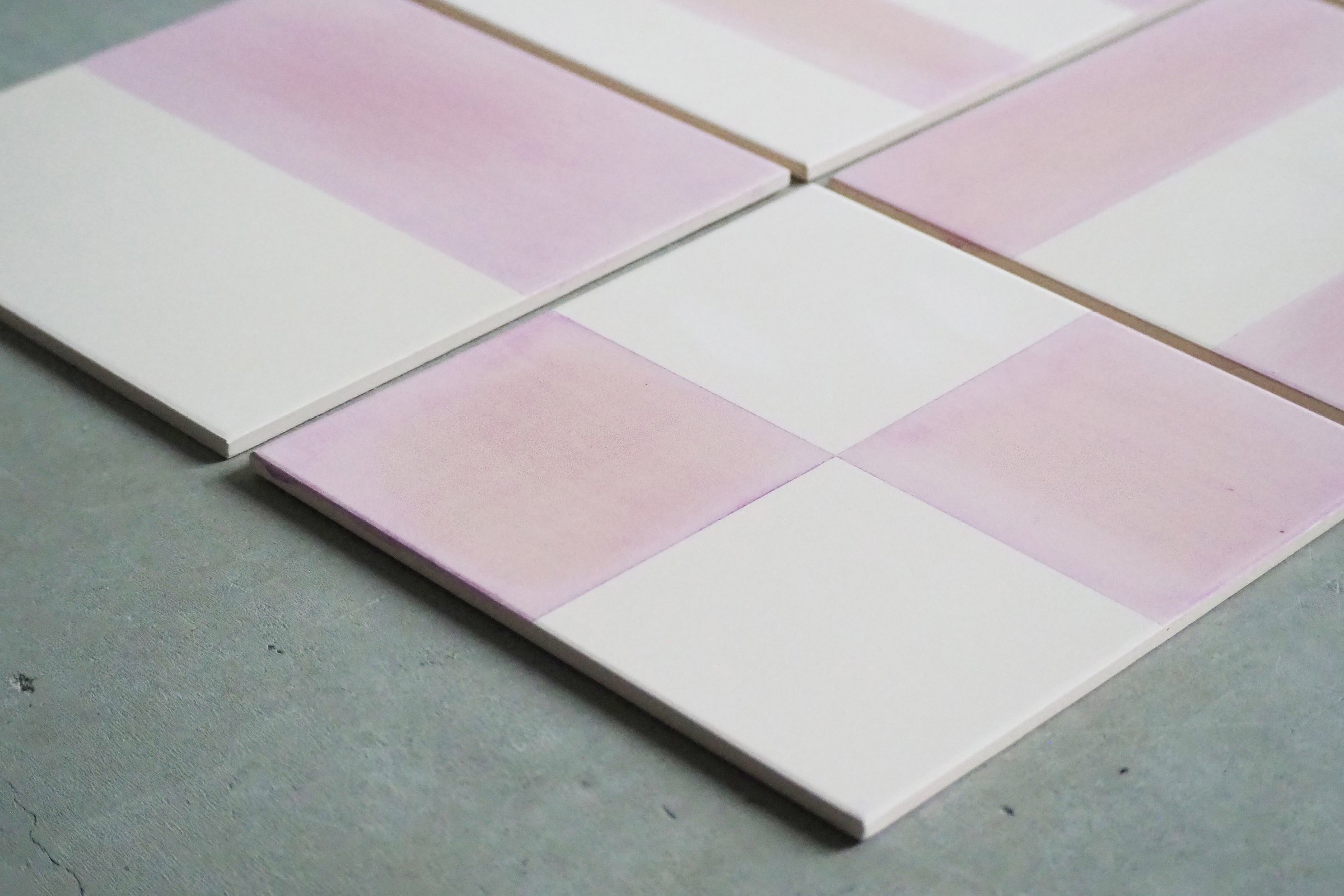Kaori Akiyama & Shubhi Sachan On Everyday Materialities
Living Library of Seeds, a tool developed for IKEA. Photos courtesy of MLI.
This article is based on the original article by Natasha Berting for What Design Can Do.
We have summarized and adapted the content to provide insights into the perspectives of Kaori Akiyama and Shubhi Sachan on everyday materialities and their contributions to the fields of design and sustainability.
In the realm of circular design, understanding the composition and purpose of materials is essential for minimising their environmental impact, particularly regarding resource consumption and waste generation. Beyond the obvious, materials influence culture and behaviour subtly yet profoundly. Natasha Berting recently engaged in a dialogue with two pioneers in the field of material research and design: Kaori Akiyama, founder of STUDIO BYCOLOR in Tokyo, and Shubhi Sachan, founder of the Material Library of India (MLI). Both are part of this year's Selection Committee for the Redesign Everything Challenge, organised by What Design Can Do, and they shared insights into the intersection of creativity, sustainability, and the future of material research.
Nori Pigment research process and finished tiles, photo by Jube Kato and STUDIO BYCOLOR.
Kaori Akiyama: Valuing Heritage and Craftsmanship in Design
Kaori Akiyama has spent over a decade exploring how materials and colours influence product and spatial design. "When making something new, I always want to know how it was made in the past. Why was it made in colour it was and the material it was made from?" explains Kaori. Investigating the history of materials isn't just about understanding their past uses; it's about valuing the heritage and craftsmanship that inform contemporary design practices. This approach involves rethinking and reconsidering the traditional methods that could enhance future designs. "Encounters with new materials and technologies, as well as dialogues with developers and craftspeople, stimulate my curiosity and motivate me," she adds, highlighting the dynamic interplay between historical understanding and innovation.
Nori Pigment research process and finished tiles, photo by Jube Kato and STUDIO BYCOLOR.
Nori Pigment research process and finished tiles, photo by Jube Kato and STUDIO BYCOLOR.
“What excites us is not only what we can discover from faraway materials like moon sand, but when we encounter the unknown charm of materials that are hidden in our daily lives.”
Nori Pigment research process and finished tiles, photo by Jube Kato and STUDIO BYCOLOR.
Kaori Akiyama: Valuing Heritage and Craftsmanship in Design
Kaori Akiyama has spent over a decade exploring how materials and colours influence product and spatial design. "When making something new, I always want to know how it was made in the past. Why was it made in colour it was and the material it was made from?" explains Kaori. Investigating the history of materials isn't just about understanding their past uses; it's about valuing the heritage and craftsmanship that inform contemporary design practices. This approach involves rethinking and reconsidering the traditional methods that could enhance future designs. "Encounters with new materials and technologies, as well as dialogues with developers and craftspeople, stimulate my curiosity and motivate me," she adds, highlighting the dynamic interplay between historical understanding and innovation.
Shubhi Sachan: Advocating for Material Literacy
As the depletion of natural resources looms closer and waste levels surge, the Material Library of India (MLI) envisions a future where waste streams become reservoirs of valuable materials. "India is a growing economy, hence the economic gap is huge. While some people are still holding on to sustainable traditions and practices, a part of society has completely forgotten about them — this is the beauty and the challenge of an extremely diverse country like India. Through our consultation and material literacy programmes, we try to reduce these gaps. If the project is focused on artisan communities — then our role is to either bring awareness about material histories or respective values to the market," says Shubhi. At the forefront of consultation and awareness initiatives, MLI is a dynamic research and design consultancy fervently devoted to unlocking the latent potential of industrial and agricultural waste. With nearly a decade of pioneering work, MLI boasts specialised expertise in developing innovative, data-driven solutions that revolutionise utilising these overlooked materials.
“But good materials often come with a slower pace of making and consumption. There is a huge mismatch between the sustainability that is demanded by the capitalist world versus the sustainability that nature’s cycles allow. It’s exciting to see people wanting to do more and more sustainable products and practices, but at the same time it’s sad to see them giving up to the pressure of the large orders and fast-paced manufacturing cycles. ”
Challenges and Opportunities in Material Design
Both designers discuss the immediate material challenges that need attention. For Kaori, the challenge lies in the transparency of material usage, especially in disposal processes. Waste disposal in Japan involves meticulous sorting, a task complicated by the growing variety of materials used in products. Shubhi, on the other hand, points to the alarming ignorance about the material composition of everyday products, from food to cosmetics, emphasising the fundamental role of education.
"In my experience, not everything needs human intervention or solutions and we need to be careful that we don't disturb an ecosystem when we try to save or help something. An excellent material could be a doomsday calling without a thoughtful system around it. For example, if we move towards all natural and organic materials but maintain the same speed of consumption," Shubhi reflects on the delicate balance required in sustainability efforts.
Towards a Sustainable Future
Regarding the future, both Kaori and Shubhi are optimistic but realistic about the possibilities. Kaori is particularly excited about the "discovery of the unknown charm of materials hidden in our everyday lives," such as the innovative use of Nori pigment in interior products. Shubhi sees a promising shift towards sustainability, though she is cautious about the accelerated demands of modern capitalism, which often clash with the slower rhythms of natural ecosystems.
Advice for Aspiring Designers
Both experts advise those looking to make a difference in the design field. Kaori advises designers to start paying attention to their immediate environment: "Remember what you touched today and ask: 'Why that material, why that colour?'" Shubhi emphasises the need for moderation and consideration to ensure solutions do not disturb existing ecosystems.
With their work, Kaori Akiyama and Shubhi Sachan are not only shaping the future of design but also setting a new standard for integrating creativity, sustainability, and material responsibility into the design process.
The full interview is available on the What Design Can Do website for those interested in delving deeper into this topic.
Info
Kaori Akiyama
STUDIO BYCOLOR
Shubhi Sachan
Material Library of India






